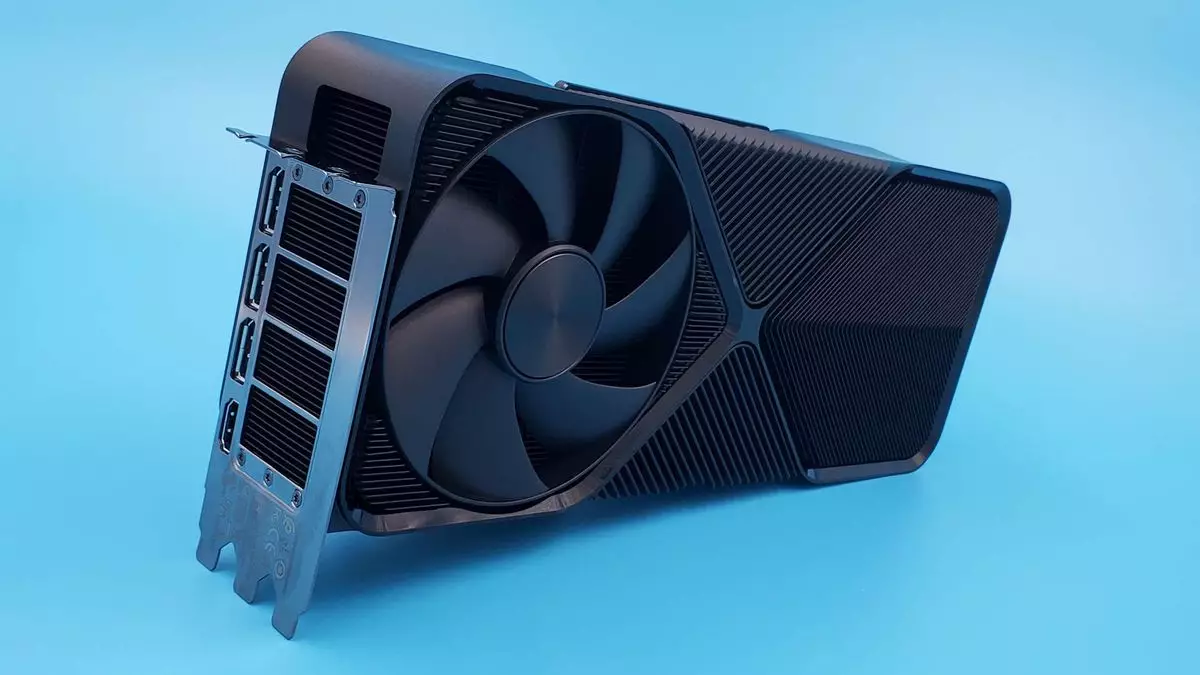The landscape of video game graphics is on the brink of a revolutionary shift, with advancements in artificial intelligence (AI) poised to redefine how games are rendered. Nvidia, a dominant force in graphics processing units (GPUs), has reportedly developed plans for a new architecture that could pave the way for a transformative gaming experience. Recent leaks hint at the launch of the RTX 5090 and a new performance benchmark through AI-driven technologies, presenting gaming enthusiasts and developers with unprecedented opportunities.
The notion of Neural Rendering—that is, utilizing neural networks to create game graphics—has emerged as a frontrunner in the discussion around next-generation graphics capabilities. While traditional methods rely on complex 3D pipelines, the possibility of shifting toward a system where graphics are fully rendered by AI algorithms is tantalizing. Such a leap could not only streamline performance but also enhance realism, paving the way for lifelike environments within modern video games.
At the CES 2025 event, Nvidia is widely anticipated to unveil innovations stemming from its Blackwell architecture. Accompanying these announcements are clues released by INNO3D regarding a “new range of graphics cards,” strongly suggesting a fresh slice of Nvidia’s future. With mentions of AI technologies and ray tracing at the core of this narrative, one can sense a palpable excitement—a promise of an era where in-game visuals could increasingly approximate real life.
The features linked to this new GPU generation elaborate on the possibilities that come with AI-enhanced workflows. For instance, the improved performance in AI-assisted tasks signifies a shift where content creators can achieve more efficient outputs. Moreover, with the advent of advanced upscaling techniques, video content both for gaming and animation may see significant uplifts in quality, courtesy of enhanced algorithms.
Generative AI acceleration is set to enhance the capabilities of graphic designers and developers. Such advances will not just streamline workloads but could fundamentally change how developers approach the design of game worlds. As AI starts to take over complicated tasks such as texture synthesis and environmental modeling, the creative process could become more about conceptualization rather than technical execution.
Ray tracing has been a game changer in creating stunning visuals, offering more realistic lighting and shadows. However, the integration of advanced AI techniques into ray tracing could usher in even more profound changes. Enhanced ray tracing through improved RT cores means that players can expect to see richer lighting dynamics, sharper shadows, and more accurate reflections—pushing immersion to unprecedented levels.
Yet, while the industry is abuzz with the prospect of fully neural-rendered visuals, it is essential to temper expectations. Nvidia’s previous discussions around Neurally-rendered graphics have indicated that while the technology is feasible, the quality was not adequate to meet gaming standards. Nvidia’s VP of Applied Deep Learning Research, Bryan Catanzaro, acknowledged that current neural rendering capabilities still require significant refinement to achieve levels of detail comparable to traditional rendering engines.
What Nvidia might be brewing with the RTX 50-series GPUs isn’t a complete abandonment of traditional rendering methods but rather a hybrid model where AI complements existing pipeline processes. Utilizing AI for specific tasks within the rendering workflow—such as real-time neural radiance caching—could be a pragmatic approach that combines the efficiency of AI with the reliability of traditional GPUs.
While some speculate that a comprehensive neural rendering system may ultimately be on the horizon, it’s likely that Nvidia will continue its trend of integrating AI-driven techniques incrementally in its product offerings. Each advancement may lead toward a clearer vision of a future where graphics can be rendered not only faster but also in a significantly higher quality.
As Nvidia maintains its direction toward AI development, competitors will be watching closely. The thorough integration of AI capabilities promises to further solidify Nvidia’s position as a leader in the graphics card market. The question remains not just about meeting the demands of gamers but also about addressing the evolving needs of creators who significantly contribute to the gaming ecosystem.
The shift toward AI-enhanced graphics represents a thrilling phase in gaming technology—a trajectory that promises to enhance realism and efficiency in creative workflows. As Nvidia gears up for its anticipated product announcements, the industry watches with bated breath to witness the next steps in the evolution of digital graphics.

